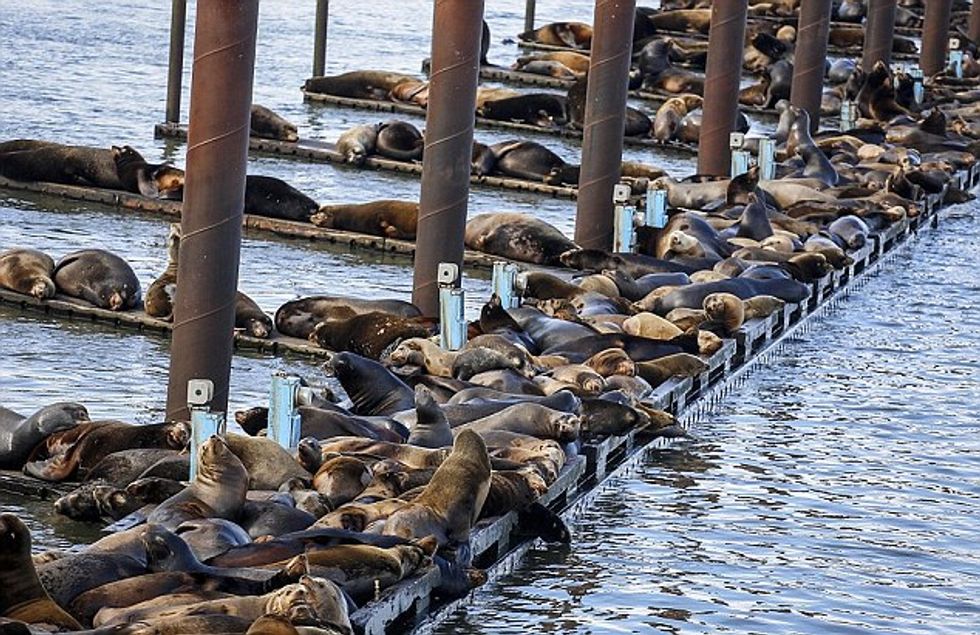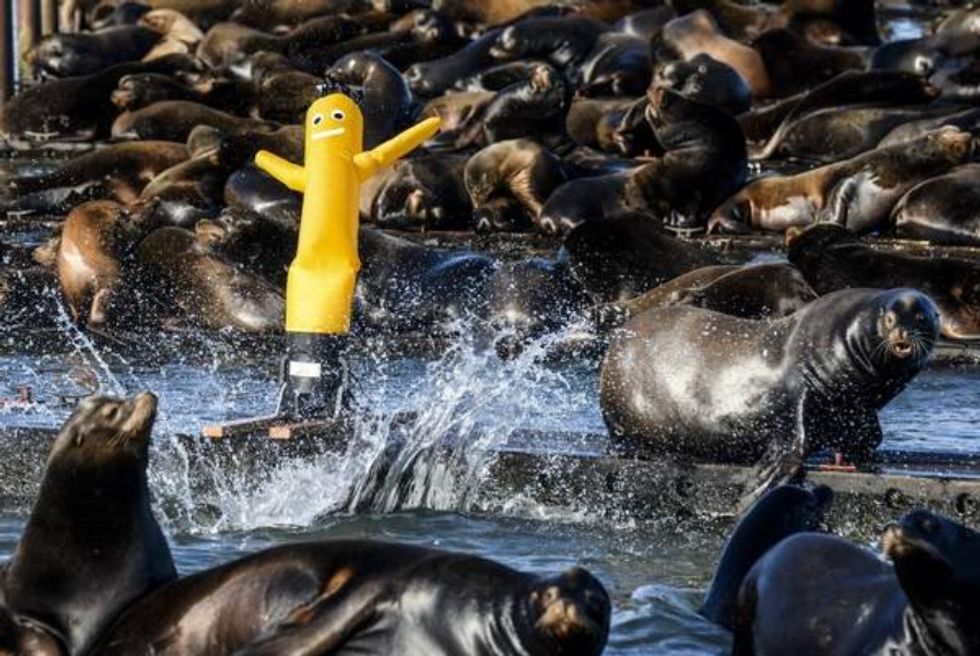Sea lions and the little coastal town of Astoria, Ore. have a long history. (Interjection: why are they called sea lions? They don’t look anything like lions, and they don’t even hold the same rank in the food chain. Honestly, who named these things?)
You see, every year, male California Sea Lions (the ones that are too fat and ugly to get a girl) migrate up the coast from their normal homes along the California coast to the cooler waters of the Oregon coast. They have a tendency to lounge around on docks, piling on the weight, and several docks have therefore become unusable to humans.
They are quite dangerous, and if there is even one sea lion on a dock, you should not walk onto it, even if you need to get to your boat. They weight approximately 600 pounds, but move pretty fast. Once settled on the rocks and docks in the area, they proceed to decimate the local populations of fish, especially salmon. This creates economic problems as salmon fishing is a huge part of the local industries.
You might be thinking, "Whatever, who cares, let the sea lions eat the fish, they were here first" or a variation of those thoughts. Well, you should care. The difference between sea lions and other natural predators of salmon is that sea lions often only take a passing bite out of the fish. Then that fish, missing a bite-sized chunk of its side, is left to struggle on and eventually die.
Some of the smarter sea lions swim upriver the dam and camp out, taking bites out of passing fish, decimating the traveling population. This amount of dead and dying fish is not only harmful to the fishing industry, but makes it harder for those species to survive.
Salmon fishing is highly regulated and the only fish allowed to be caught come from hatcheries. The wild population of salmon is not strong enough to sustain the blow that preying sea lions bring. If the sea lion problem causes the local salmon fishing industry to no longer be profitable or worthwhile and these hatcheries stopped operating, the population of wild salmon left would quickly become extinct which would have significant negative impacts on the overall ecosystem.
There’s a lot more environmental factors I could bring up: Sea lions are also responsible for increased pollution with their large amounts of fecal matter, which reduces the clarity of the water. However, I am certain I am beginning to bore you at this point and I am bordering on a tirade, so I will digress.
The reason I have laid out the issues that sea lions cause in Astoria is because the question of removing sea lions, or dealing with this issue, is extremely tricky. It is illegal to kill any marine mammal, and no one wants to kill the sea lions anyways. The issue is that there are far too many at the mouth of the Columbia than the ecosystem can really handle.
This is partially due to the increase in all sea lion populations, and in part because human construction such as docks and jetties makes really nice places for them to live. However, every time scientists or the port comes up with ways to relocate parts of the sea lion population, which generally includes trapping, droves of protesters come the urban centers of Oregon to protest, not realizing that removal of a majority of the population of sea lions would be beneficial for most species in the area (including humans of course).
As a result of the protests, the city has had to be, lets say creative, in the ways they deter sea lions from living on certain docks or structures. About two years ago, they used one of those floppy tubes that are usually found outside car dealerships to temporarily scare sea lions off a structure so it could be repaired. Surprisingly, it worked fairly well.
A little while after that, the city used a tactic that made national news. They had been given a life-sized, fiberglass orca whale that floated, and had a compartment that someone could sit in and steer from. Giddy with joy at the prospect of another way to get the sea lions off the docks, the city rushed in and got the whale all ready to go.
Unfortunately, shortly after it launched, it was swamped by the wake of another ship and began to tip. City officials rushed out to rescue the man inside and had to leave the whale there, floating on its back. A while later, the sea lions swam out to investigate it, and one even clambered aboard. The irony is that orcas are not natural predators of sea lions so they likely would not have been scared away. As a town where a famous scene from a famous whale movie (Free Willie) was filmed, you would think we would have been a little more orca savvy.
So remember folks, if you ever get the opportunity to use a fake whale to scare away some nuisance sea lions, turn it down so you don't make a fool of yourself.
























